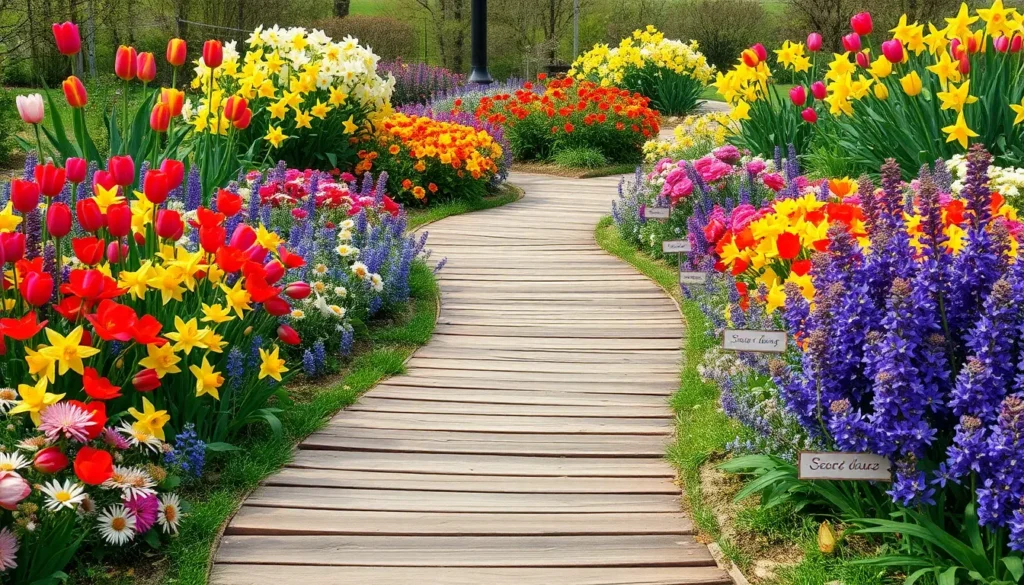As the chill of winter fades and the earth begins to stir with life, the arrival of spring beckons gardeners both new and seasoned to embrace the vibrant world of flowering plants. This season offers a unique opportunity to breathe new life into your garden with a tapestry of colors that delight the senses and invigorate the spirit. Whether you’re taking your first steps into the art of gardening or you’re a seasoned green thumb, choosing the right flowers to plant in spring can make all the difference in transforming your outdoor space into a lush paradise.
In this guide, we’ll delve into a handpicked selection of twelve stunning flowers that thrive when planted in the gentle warmth of spring. Each flower has been thoughtfully selected not only for its beauty but also for its ease of care, ensuring that gardeners of all levels can enjoy success. You’ll discover practical tips on how to plant and nurture these blossoms, as well as insights into their unique characteristics that make them a worthy addition to any garden. Prepare to be inspired and empowered, as we explore how these floral gems can enhance not only your garden’s aesthetic but also your own connection with nature.
Choosing Vibrant Spring Blooms
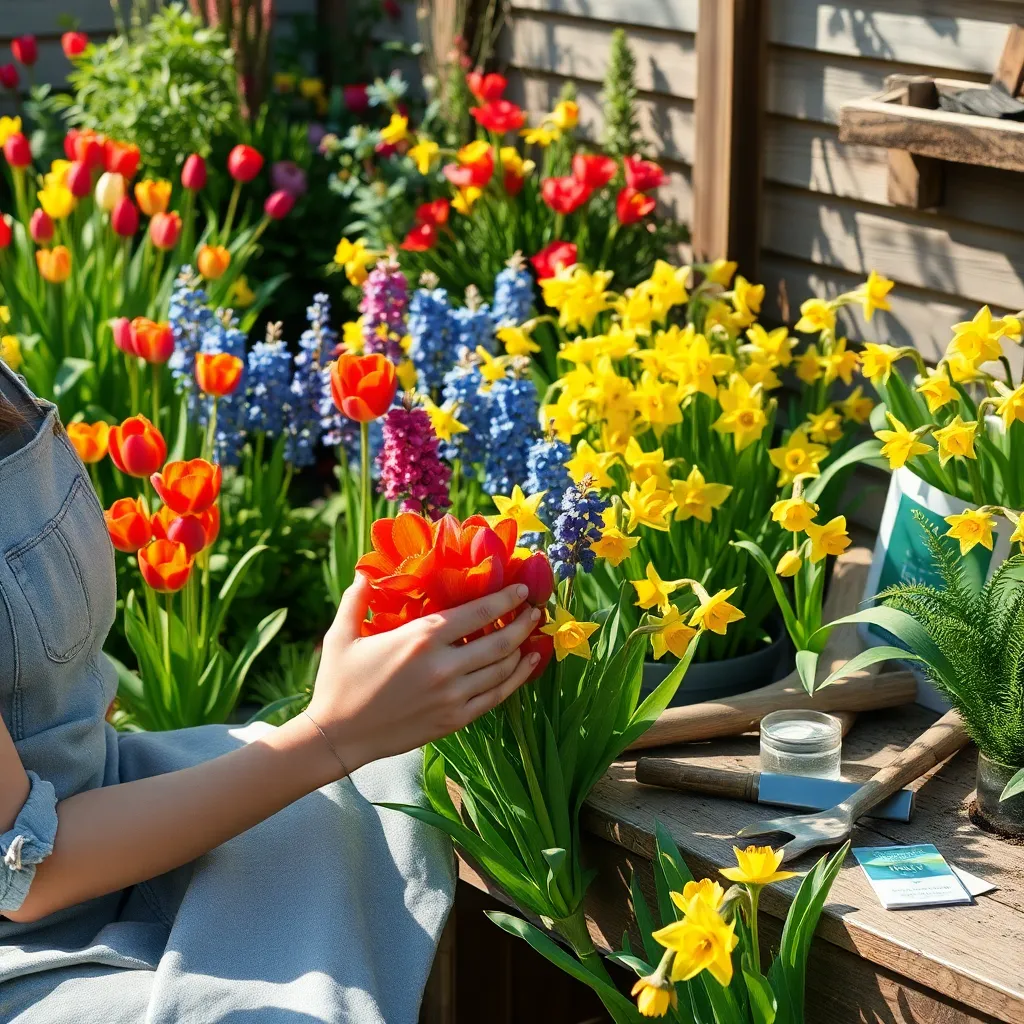
Spring is the perfect time to plant vibrant blooms that can transform your garden into a colorful paradise. Start by selecting flowers that thrive in your climate zone, ensuring a longer-lasting display.
For beginners, daffodils are an excellent choice because they are low-maintenance and resilient. Plant them in well-draining soil, about three times the depth of the bulb, and ensure they receive full sun to partial shade.
Experienced gardeners might consider planting tulips, which require a bit more attention but offer stunning rewards. Tulips flourish in sandy or loamy soil with good drainage, and they benefit from planting in clusters for a more impactful display.
Another vibrant option for spring is hyacinths, which are known for their striking colors and fragrant blooms. These flowers thrive in full sun and need well-drained soil; remember to water them sparingly to prevent rot.
Benefits of Spring Flowering Plants

Spring flowering plants offer numerous benefits beyond their vibrant colors and delightful scents. They can attract pollinators such as bees and butterflies, which are essential for the health of your garden ecosystem.
To maximize these benefits, choose a variety of plants that bloom at different times throughout the spring. This approach ensures a consistent source of pollen and nectar, helping to support a diverse range of pollinator species.
Many spring flowers, like tulips and daffodils, are low-maintenance and thrive in well-draining soil. Plant bulbs in the fall, about 6-8 inches deep, to give them the best start once the warm weather arrives.
For more experienced gardeners, consider layering bulbs with different flowering periods in the same area. This technique, known as “lasagna planting,” creates a continuous display of blooms from early spring through late spring.
Ideal Planting Times for Spring
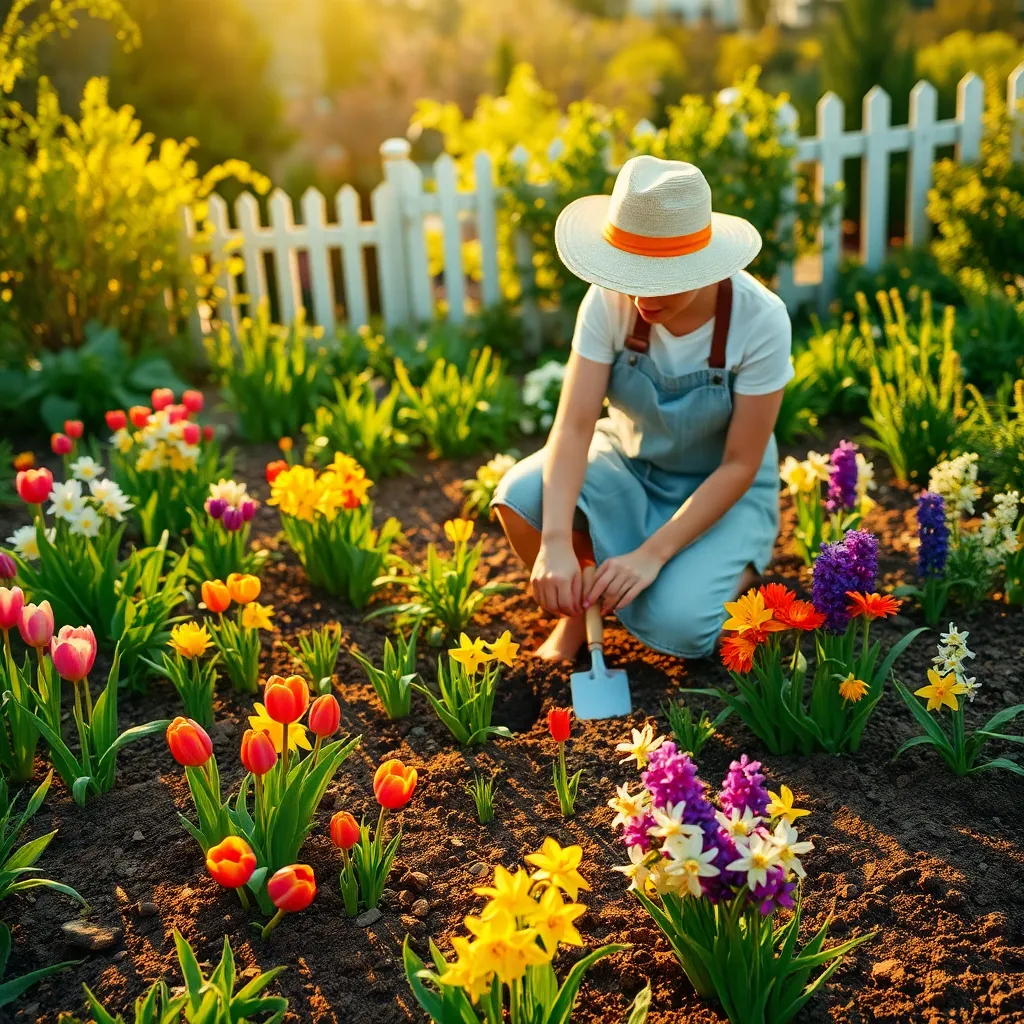
Spring is the perfect time to start planting a vibrant array of flowers that will bloom beautifully throughout the season. Begin by selecting a sunny spot in your garden, as most spring flowers thrive in full sun with at least six hours of direct sunlight daily.
Soil preparation is crucial for successful planting. Ensure your soil is well-draining and rich in organic matter by adding compost or well-rotted manure to improve fertility and texture.
Watering needs vary depending on the flower species, but a general rule is to keep the soil consistently moist without being waterlogged. For beginners, a good tip is to water early in the morning to allow moisture to reach the roots before the heat of the day.
Consider planting bulbs like tulips and daffodils, which are classic spring favorites. These bulbs should be planted in the fall, but if you missed that window, you can plant pre-chilled bulbs in early spring for a chance at a late bloom.
For more advanced gardeners, experimenting with companion planting can enhance your garden’s health. Pair flowers like marigolds with vegetables to naturally deter pests and improve growth conditions.
As your spring flowers begin to grow, regular maintenance will be key. Deadhead spent blooms to encourage new growth and apply a balanced fertilizer every four to six weeks to provide essential nutrients.
By taking these steps, you’ll create a thriving spring garden that bursts with color and life. Enjoy the process and take the time to appreciate the beauty that your efforts bring to your outdoor space.
Top Sun-Loving Spring Varieties
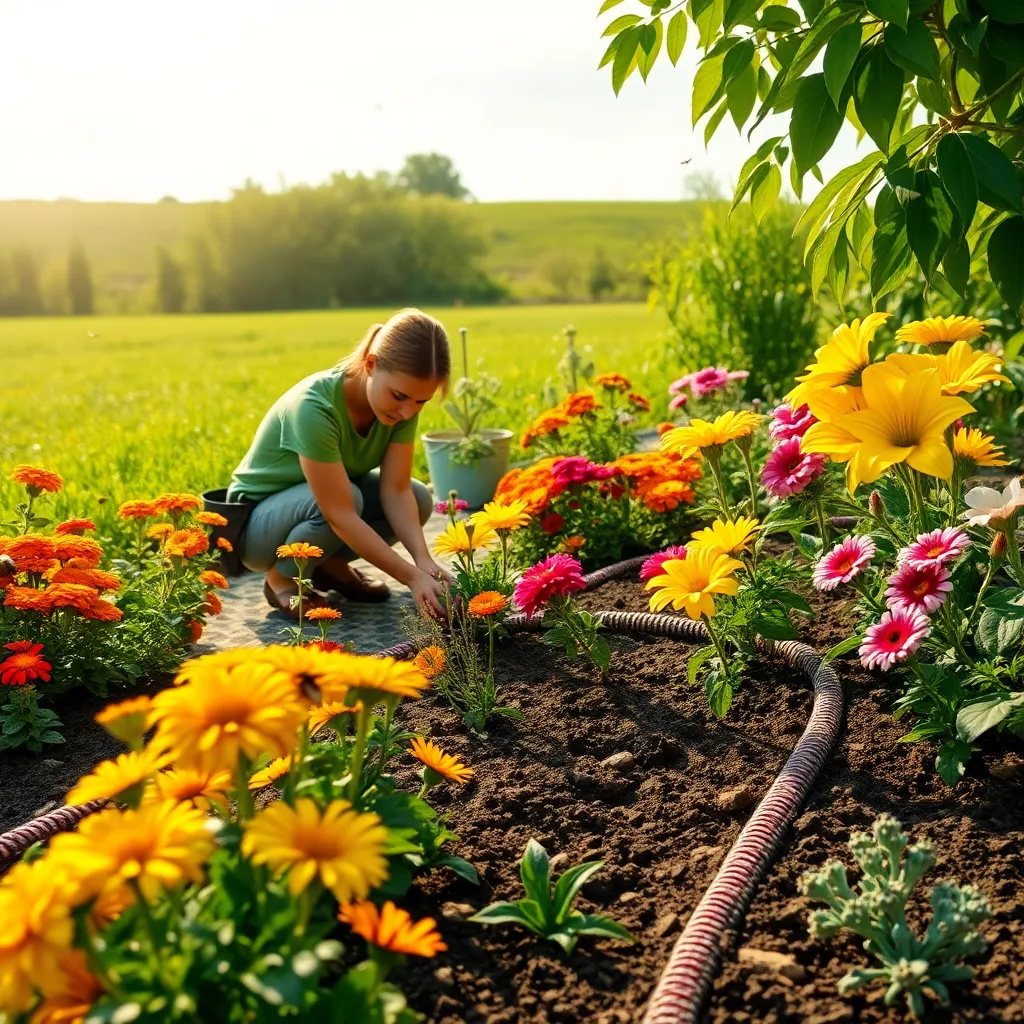
For gardeners seeking vibrant blooms under the spring sun, consider planting sun-loving varieties like marigolds and zinnias. These flowers thrive in full sunlight and provide a burst of color that can brighten any garden space.
Marigolds are especially known for their ability to repel pests, making them an excellent choice for companion planting. Plant them in well-draining soil and water moderately, ensuring the soil dries out between watering sessions.
Zinnias, on the other hand, are incredibly easy to grow and perfect for beginners. They require rich, well-drained soil and benefit from regular deadheading to promote continuous blooming throughout the season.
To enhance growth and flower production, incorporate a balanced, slow-release fertilizer into the soil at the time of planting. For more experienced gardeners, consider experimenting with companion planting by pairing zinnias with vegetables to attract pollinators.
Shade-Tolerant Beauties for Spring

For those who are blessed with shady garden spots, there are plenty of beautiful flowers that thrive without direct sunlight. One such option is the Bleeding Heart, which adds a touch of whimsy with its heart-shaped flowers hanging gracefully from arching stems.
To successfully grow Bleeding Hearts, plant them in well-draining, rich soil that retains moisture without becoming waterlogged. Ensure they receive consistent moisture, especially during dry spells, by watering them about twice a week, adjusting based on rainfall and humidity levels.
Another excellent choice for shade is the Astilbe, known for its feathery plumes that add texture and color to dim corners. These perennials thrive when planted with ample organic matter, such as compost, mixed into the soil to enhance fertility and drainage.
Astilbes prefer consistently moist soil, so mulching around the base can help retain moisture and reduce the need for frequent watering. For a more advanced touch, consider dividing the clumps every few years to promote vigorous growth and prevent overcrowding.
Hostas are also a classic shade-loving option, offering lush foliage that comes in a variety of shapes and colors. These hardy plants are low-maintenance, making them perfect for beginners; simply plant them in well-drained, slightly acidic soil and water regularly.
While Hostas are generally easy to care for, keep an eye out for slugs and snails, which are common pests. A practical tip for more advanced gardeners is to use organic slug repellents or create barriers using crushed eggshells or copper tape to protect these leafy beauties.
Perennial Favorites for Spring Gardens

Perennials are a gardener’s best friend, providing reliable blooms year after year. When planning your spring garden, consider starting with hardy perennials like peonies and daylilies which thrive in various climates.
For optimal growth, ensure these perennials are planted in well-draining soil enriched with organic matter. Adding a layer of mulch will help retain moisture and keep weeds at bay, making maintenance easier.
Spring is the ideal time to plant perennials, allowing them to establish roots before the summer heat. Make sure to water them deeply once a week, especially during dry spells, to promote robust root development.
Beginner gardeners will appreciate the forgiving nature of perennials, while experienced ones can experiment with companion planting. Pairing perennials with complementary species, like pairing irises with bee balm, can enhance both visual appeal and ecosystem health.
Annual Blooms for Quick Color

Annual flowers are an excellent choice for gardeners seeking quick bursts of color in their spring gardens. These plants complete their life cycle in one season, offering vibrant blooms that transform spaces rapidly.
Consider planting marigolds for their sunny hues and ability to deter pests. They thrive in well-drained soil and full sun, making them both beautiful and practical additions to any garden.
Petunias are another fantastic option, known for their wide range of colors and resilience. To encourage continuous blooming, deadhead spent flowers and ensure they receive at least six hours of sunlight each day.
For a touch of elegance, try planting cosmos, which are incredibly easy to grow from seed. These flowers prefer poor to average soil and will benefit from regular, but not excessive, watering.
Advanced gardeners might experiment with mixing annuals for a layered effect, combining bold colors and varying heights. Use a rich, organic mulch around the plants to conserve moisture and suppress weeds, enhancing the garden’s overall health and appearance.
Bulb Planting Tips and Tricks
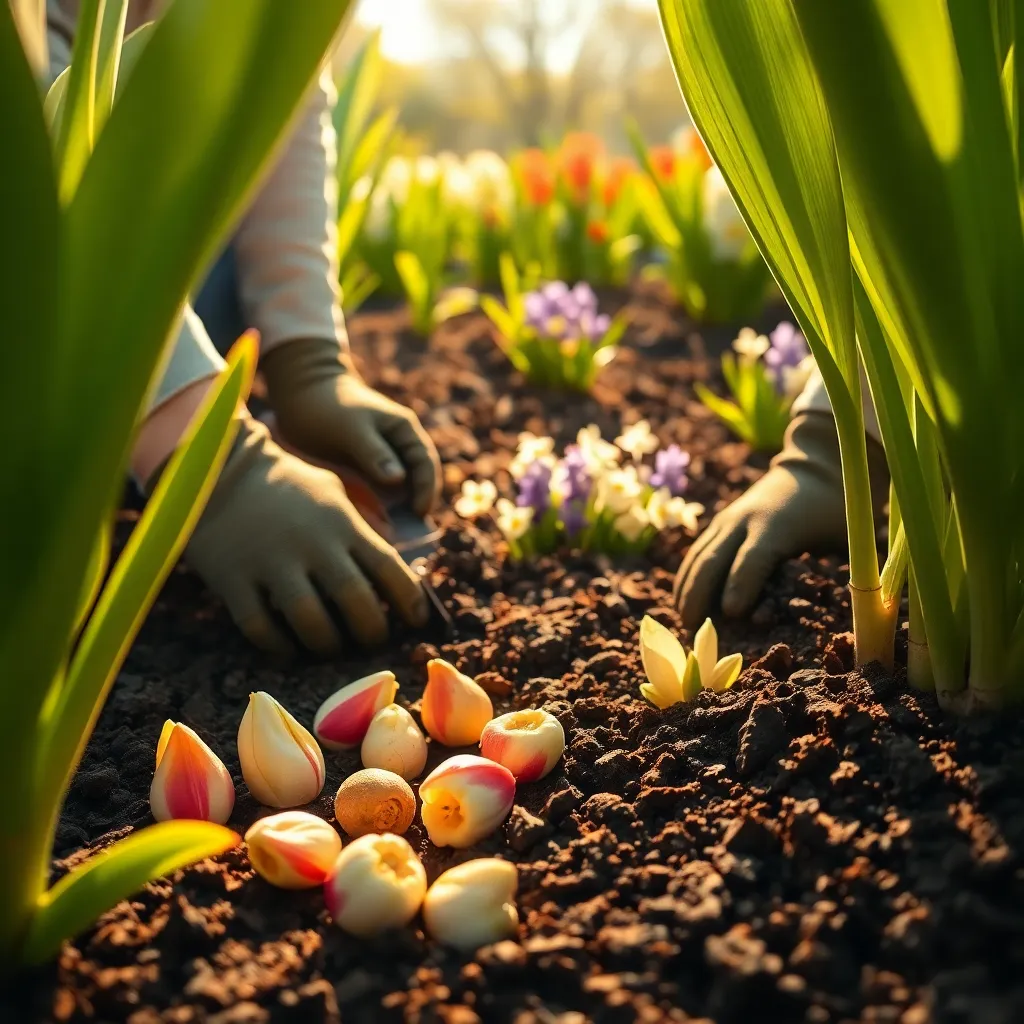
When planting bulbs in spring, timing is essential for success. Aim to plant bulbs once the soil has warmed to about 55°F, which usually happens when nighttime temperatures stay above 40°F.
Consider the specific needs of each bulb type to ensure a thriving garden. For instance, tulips and daffodils prefer well-drained soil, so amend your garden with sand or organic matter if necessary.
Proper planting depth is crucial for bulb growth. As a general rule, plant bulbs at a depth that is two to three times their height to protect them from temperature fluctuations and pests.
Watering is another key factor in bulb success. After planting, water the bulbs thoroughly to help settle the soil and remove air pockets, but ensure the area doesn’t become waterlogged.
For advanced gardeners, consider using bulb fertilizers. A balanced, slow-release fertilizer can provide nutrients that boost growth and bloom quality throughout the growing season.
To keep your garden vibrant, interplant bulbs with perennials. This technique not only extends blooming times but also helps conceal the fading foliage of the bulbs later in the season.
Finally, protect your bulbs from wildlife. Use deterrents like crushed gravel or wire mesh over the planting area to prevent animals from digging them up.
Caring for Emerging Spring Flowers
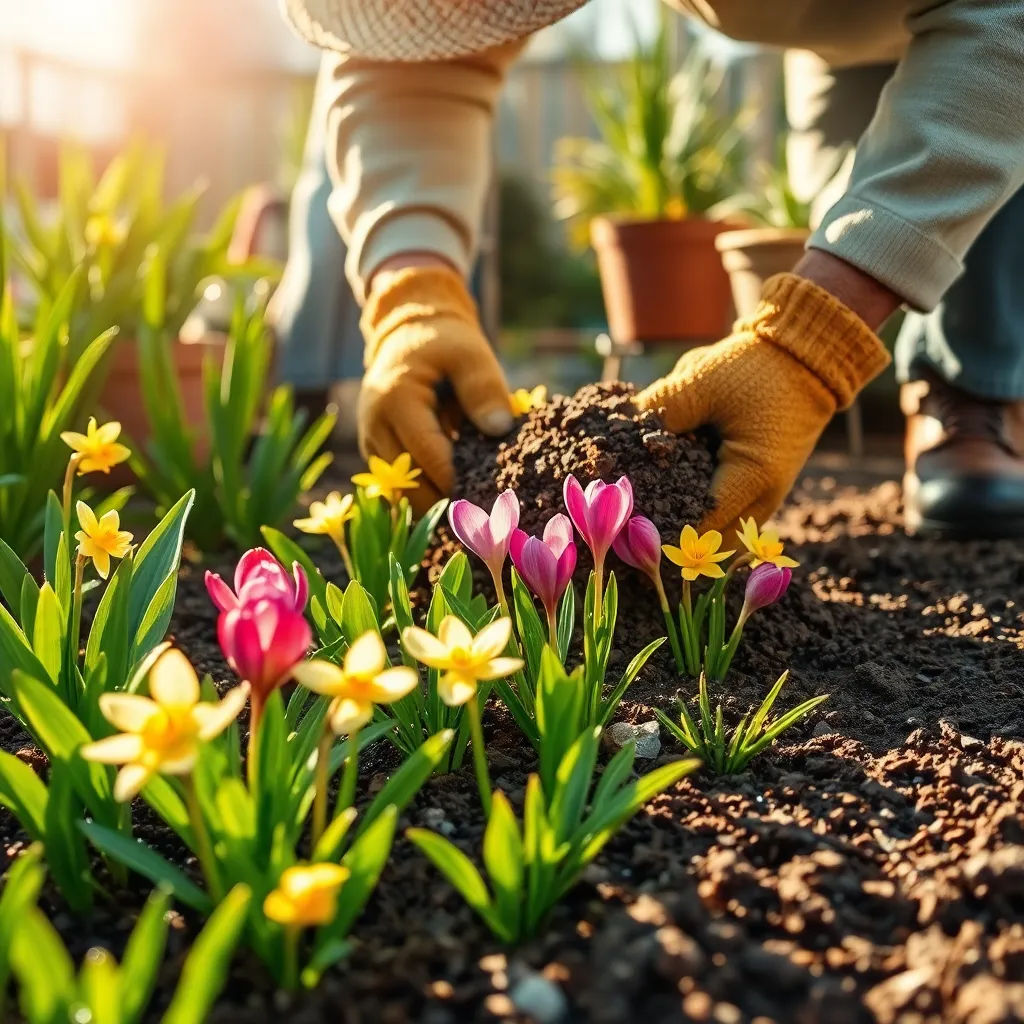
As your spring flowers begin to emerge, it’s essential to provide them with optimal care to ensure vibrant blooms. Start by making sure the soil is well-draining and enriched with organic matter, which helps retain moisture while providing nutrients.
Regular watering is crucial, especially in the early stages of growth. Aim to keep the soil consistently moist but not waterlogged, which can lead to root rot.
For those looking to give their plants an extra boost, consider applying a balanced, slow-release fertilizer. This will provide a steady supply of nutrients throughout the growing season, encouraging healthy growth and robust blooms.
Mulching around the base of your flowers can help retain soil moisture and suppress weeds. Use organic materials like wood chips or straw, which will also break down over time and add nutrients back into the soil.
Be mindful of pests that might be attracted to tender new growth. Regularly inspect your plants and, if needed, use organic pest control methods such as neem oil or insecticidal soap to keep them at bay.
For advanced gardeners, consider deadheading spent flowers to encourage more blooms and prevent the plant from diverting energy into seed production. This simple task can make a significant difference in the overall appearance and health of your plants.
Companion Planting for Spring Success
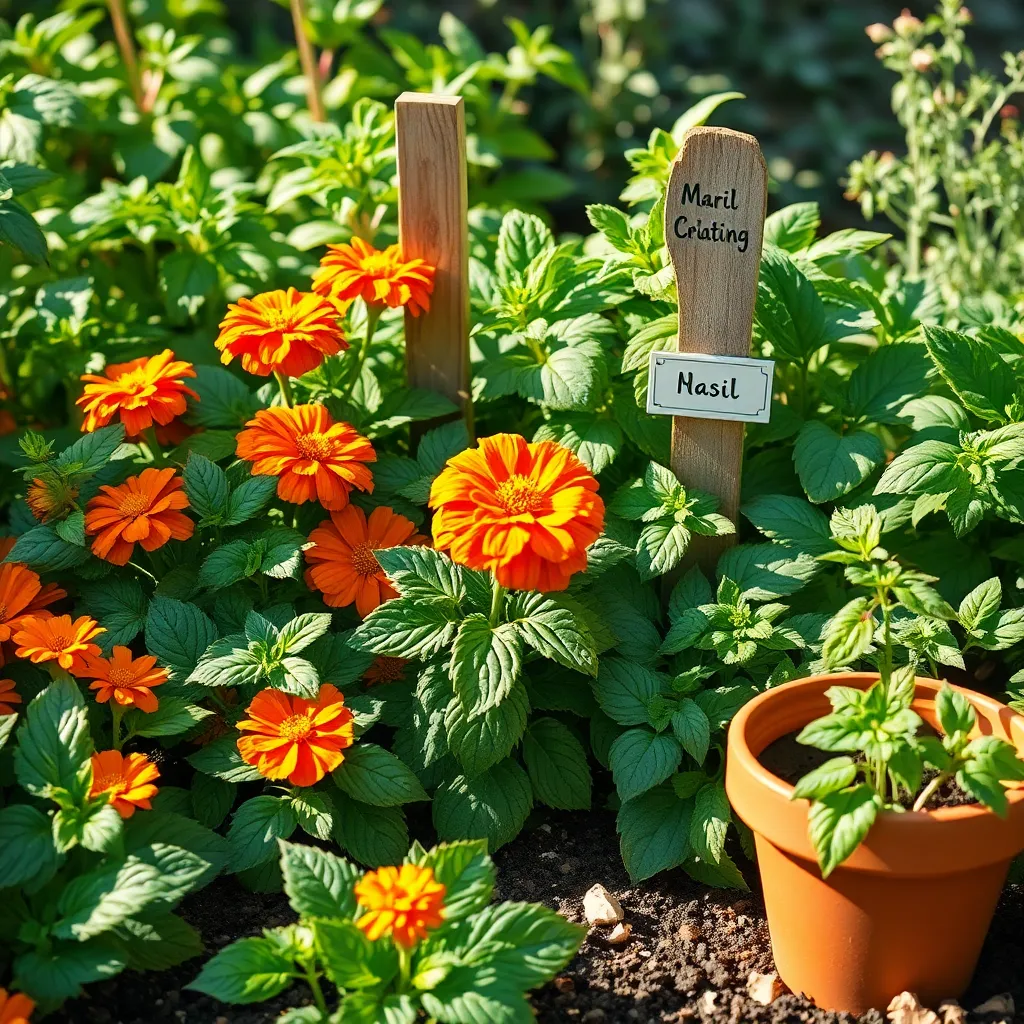
Companion planting is an excellent strategy to maximize the health and productivity of your spring garden. By choosing plants that benefit each other, you can enhance growth, deter pests, and improve soil health, leading to a more successful gardening experience.
One classic combination is planting marigolds alongside your spring vegetables. Marigolds not only add a pop of color but also help repel nematodes and other garden pests, creating a healthier environment for your veggies.
Consider growing nasturtiums near your cabbages and broccoli. These flowers act as a trap crop, attracting aphids away from your precious brassicas and keeping them safe from infestation.
For those looking to enhance the flavor of their tomatoes, try planting basil nearby. Basil can improve the taste of your tomatoes while also deterring harmful insects like flies and mosquitoes, making it a perfect companion plant.
Aside from pest control, companion planting can also improve soil conditions. Legumes, such as peas and beans, can be planted to fix nitrogen in the soil, benefiting nearby nutrient-hungry plants like leafy greens.
Watering is another consideration when planning your companion planting layout. Group plants with similar moisture needs, such as zinnias and cosmos, to ensure efficient watering practices and avoid over- or under-watering.
By taking advantage of the natural benefits of companion planting, you can achieve a thriving, beautiful spring garden. Start experimenting with different plant combinations to find what works best in your space, and enjoy the journey of creating a more harmonious garden ecosystem.
Pest Management for Springtime Flowers

Springtime flowers bring immense beauty to gardens, but they can also attract unwanted pests. To protect your blooms, consider implementing integrated pest management strategies that focus on prevention and control.
One effective method is to encourage beneficial insects, such as ladybugs and lacewings, which naturally prey on common garden pests. Planting flowers like dill, fennel, and yarrow can attract these helpful allies to your garden.
Regularly inspecting your plants is crucial during the spring months. Look for signs of damage such as holes in leaves or discolored spots, which could indicate the presence of pests.
Another practical tip is to use organic insecticides as a last resort, ensuring they are safe for both your plants and the environment. Neem oil and insecticidal soap are effective options for managing aphids and other soft-bodied insects.
For advanced gardeners, creating a diverse garden ecosystem can naturally deter pests. By interplanting a variety of species, you can disrupt the habitat preferred by specific pests, reducing their impact.
Additionally, maintaining healthy soil is key to preventing pest problems. Regularly amend your soil with organic matter like compost to enhance its fertility and structure, supporting robust plant growth.
Lastly, practice proper watering techniques to keep your plants strong and less susceptible to pests. Water early in the morning to allow foliage to dry throughout the day, minimizing the risk of fungal diseases and pest attraction.
Extending Bloom Period into Summer
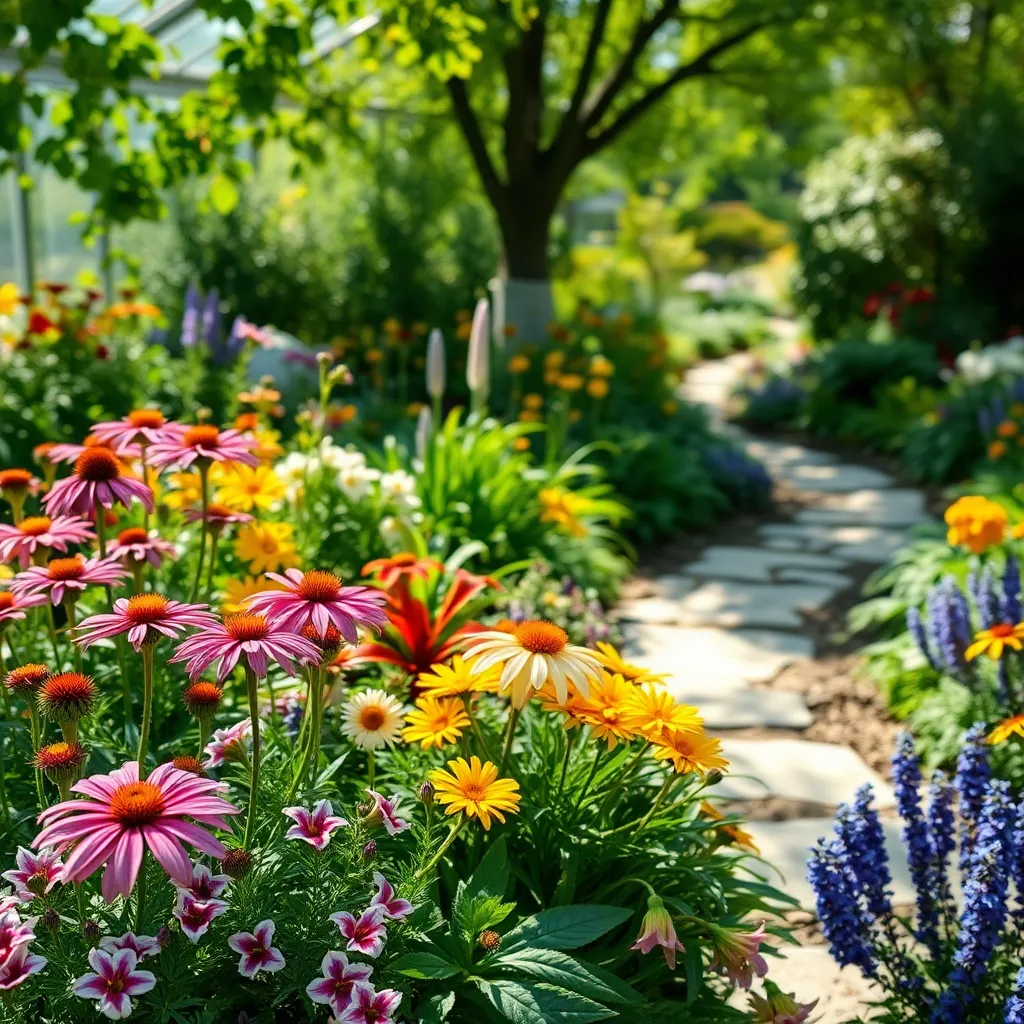
Extending the bloom period of your flowers into summer requires careful plant selection and attention to their needs. Start by choosing perennials such as daylilies, coneflowers, and black-eyed Susans, which are renowned for their long blooming seasons.
To ensure continuous blooms, practice deadheading, which involves removing spent flowers to encourage new growth. This technique not only extends the flowering period but also promotes healthier plants by redirecting energy from seed production to new blooms.
Watering consistently is crucial, especially as temperatures rise. Most summer-blooming flowers prefer deep watering every few days rather than light, frequent watering to encourage deep root growth and resilience against drought.
For those looking to add a touch of advanced care, consider using slow-release fertilizers to provide a steady supply of nutrients throughout the growing season. Applying a layer of mulch around your flowers will help retain moisture and keep soil temperatures stable, further supporting extended bloom periods.
Incorporate a mix of annuals and perennials in your garden to maintain a vibrant display. For example, zinnias and cosmos can fill gaps left by early spring blooms and will thrive in the warm summer months with minimal care.
By following these practical steps, your garden will stay colorful and inviting well into the summer season. With attention and the right techniques, you can enjoy a continuous parade of blooms that delight the senses.
Conclusion: Growing Success with These Plants
In this vibrant journey through “12 Gorgeous Flowers to Plant in Spring,” we’ve explored the essential relationship principles that each bloom symbolizes, from nurturing trust like the resilient tulip to fostering open communication akin to the expressive daffodil. We’ve celebrated the power of patience embodied by the iris and the importance of shared growth reflected in the ever-spreading lilac. Each flower teaches us to embrace diversity, commitment, and the beauty of renewal in our relationships.
Now is the perfect time to plant these seeds of wisdom in your own partnership. Start by choosing one concept to focus on this week—perhaps cultivating patience or enhancing communication—and observe how this small step can bloom into deeper connection and understanding.
Remember, nurturing a relationship is a continuous, evolving process. Save this article as your go-to garden of ideas to revisit and cultivate your relationship year-round. Simply bookmark it now, ensuring these insights are always close at hand.
Embrace the blossoming journey ahead with confidence, knowing that your dedication to these principles will lead to a flourishing relationship filled with love and harmony. Your relationship success story begins with the seeds you plant today.

